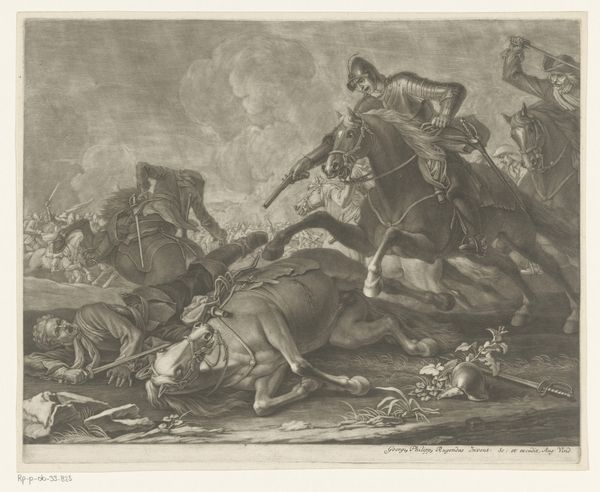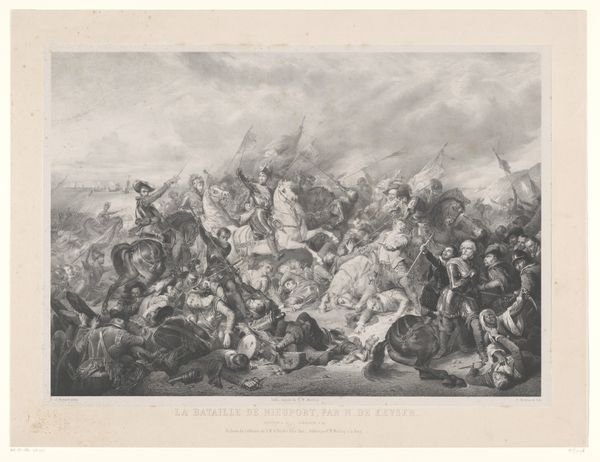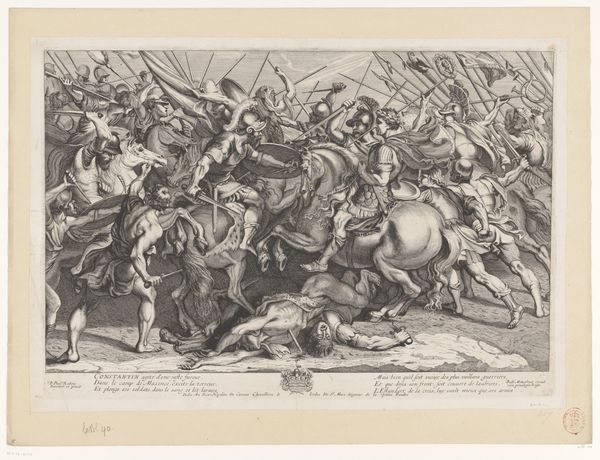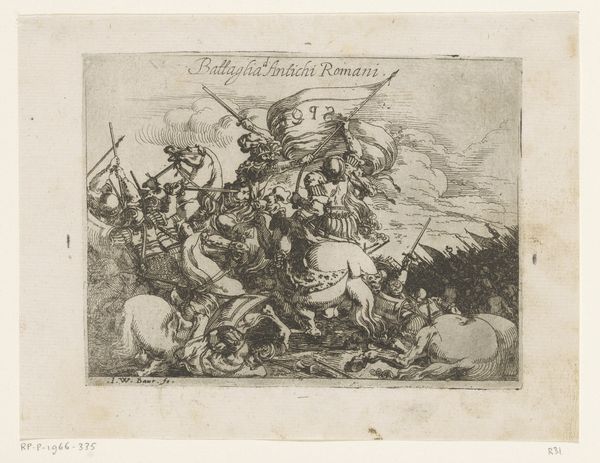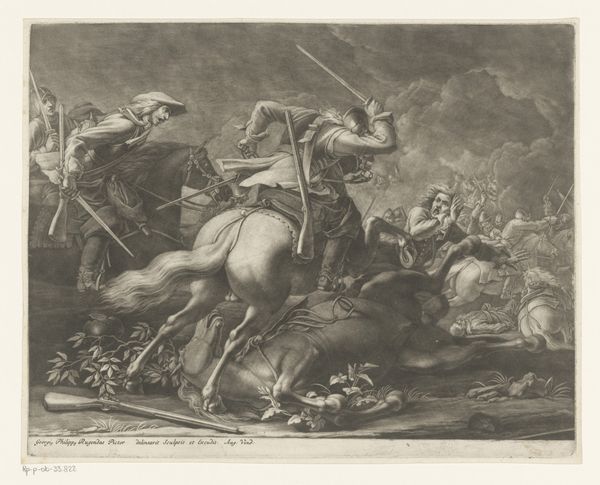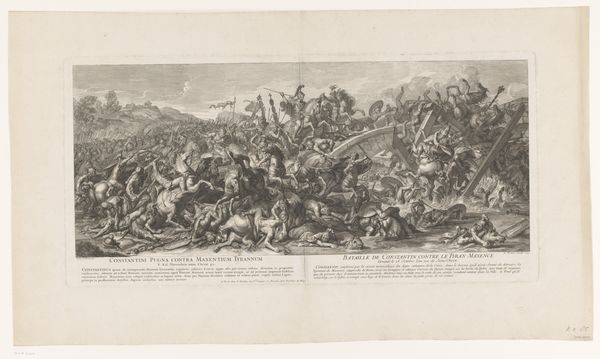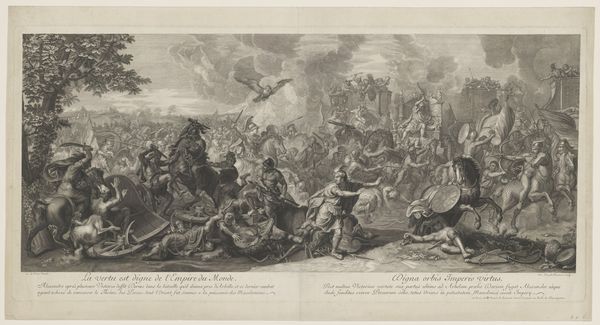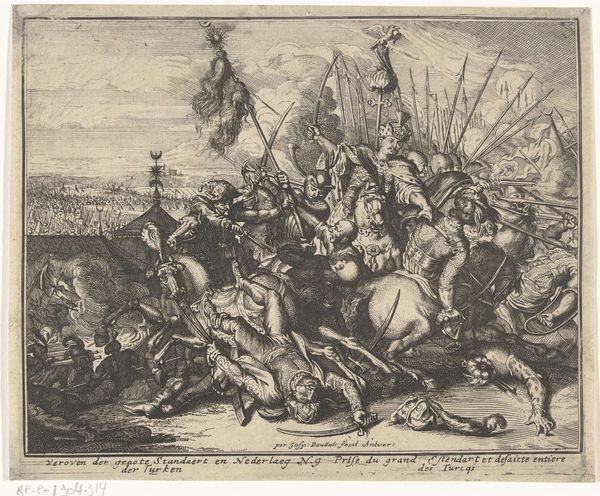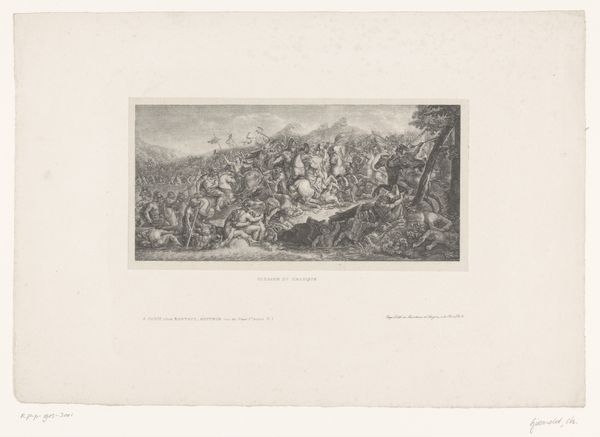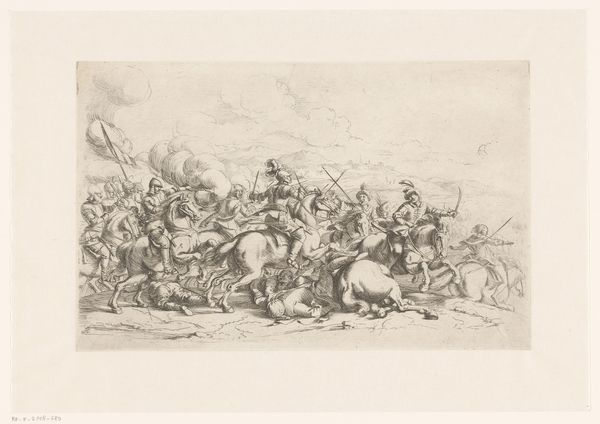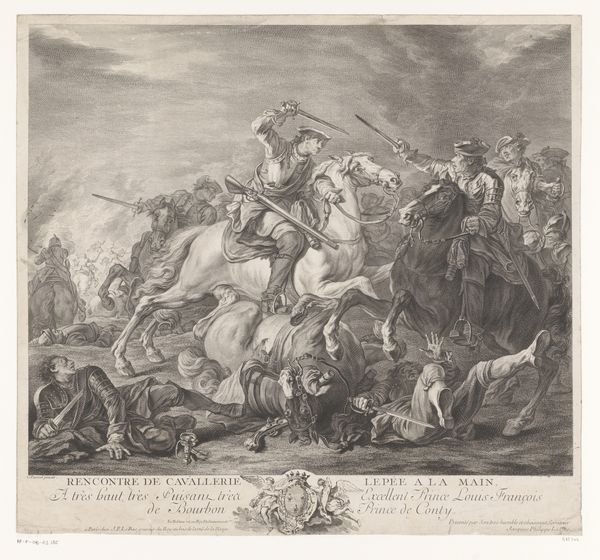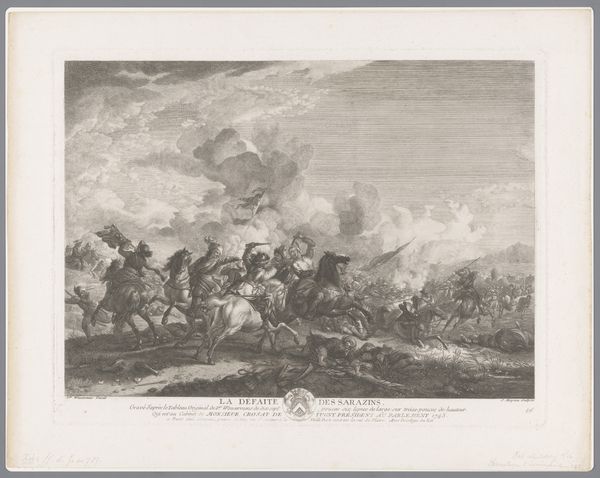
#
pencil drawn
#
photo of handprinted image
#
light pencil work
#
ink paper printed
#
pencil sketch
#
old engraving style
#
personal sketchbook
#
pen-ink sketch
#
sketchbook drawing
#
pencil work
Dimensions: height 272 mm, width 356 mm
Copyright: Rijks Museum: Open Domain
Jacob Andreas Fridrich made this print, *Ruitergevecht*, meaning 'Cavalry Battle' in the 18th century. It's rendered in a technique called etching, a printmaking process using acid to create lines in a metal plate, which is then inked and pressed onto paper. The appearance of this print is entirely dependent on the artist's skilled manipulation of metal and acid. Look closely, and you'll see how the density and depth of the etched lines create the illusion of light, shadow, and texture, bringing the chaotic battle scene to life. The process of etching demands meticulous labor and technical expertise. Fridrich's mastery of this craft allowed him to translate the dynamic energy of a cavalry battle into a tangible, reproducible image. Prints like these played a crucial role in disseminating visual information and shaping public perceptions during the 18th century. Considering the materials and processes behind *Ruitergevecht* allows us to fully appreciate the artistry and cultural significance embedded within it, challenging any simple divide between craft and fine art.
Comments
No comments
Be the first to comment and join the conversation on the ultimate creative platform.
